#source and roleplaying game
Explore tagged Tumblr posts
Text








Hellboy: Sourcebook and Roleplaying Game -2002- Dark Horse Comics
"The Astromagnet" and "The Kabandha"
story by Mike Mignola, Jai Nitz, and Philip Reed
art by Zach Howard
colors by Peter Bergting and Philip Reed
letters by Jai Nitz
#hellboy#source and roleplaying game#dark horse comics#mike mignola#jai nitz#philip reed#zach howard#peter bergting#comics
11 notes
·
View notes
Text
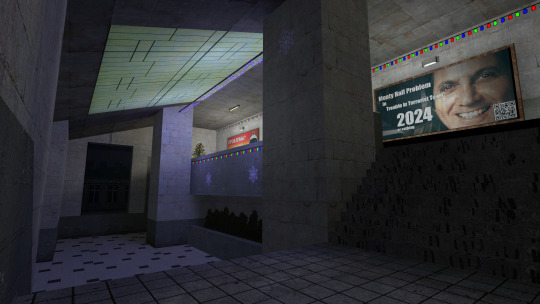
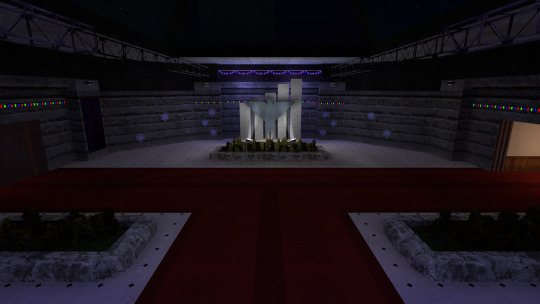
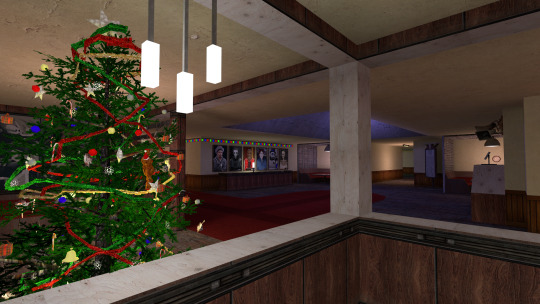
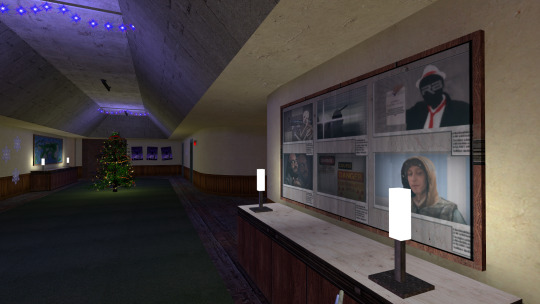
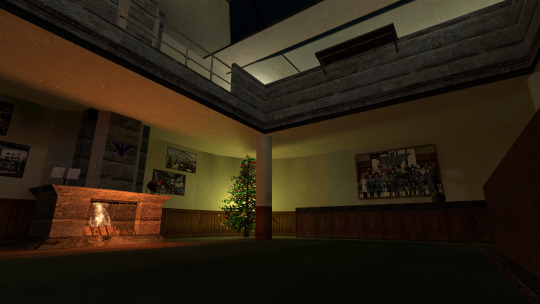
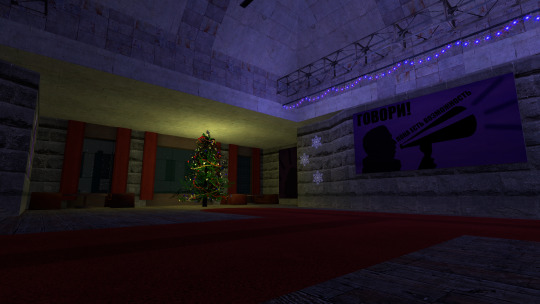

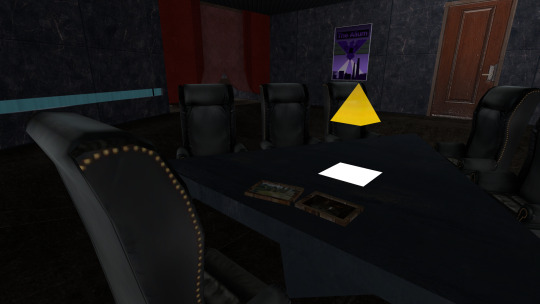
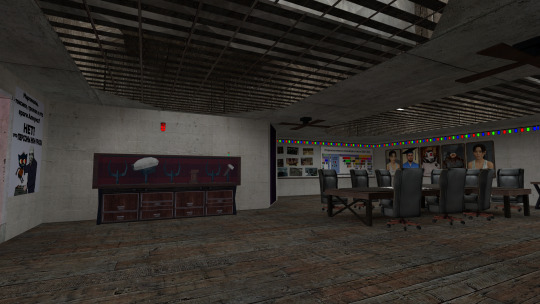
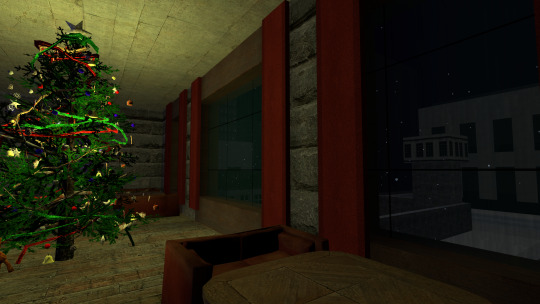
gm_xmas_nook
created by Erick_Maksimets
bonus
#garry's mod#gmod#source engine#half life 2#other#hearted#this one is just a clan map with a festive wrapper but i couldn't help myself#reminds me so much of all the weird clan hub maps i'd find while doing jedi academy roleplay when i was a kid#impenetrable in-jokes court and debate rooms etc... the weird self-seriousness that online game clans conduct themselves with. lmao
33 notes
·
View notes
Text
Feel the sting of betrayal Deadly sin like a weapon As cruel as steel and bullets Corrupted absolutely!
#roleplay musings#rp musings#source: the recovery system#game: roblox#game: block tales#character: captain trotter#character: calypso#character: the ancients#song: the ancients (i'm your captain now)#roblox#block tales#roblox block tales#block tales roblox#the recovery system
2 notes
·
View notes
Text
Okay but I do want to add as someone who's been DMing for over 10 years now-- this is a skill, and YOU CAN LEARN IT! Premade campaigns are absolutely a good way to start, especially for someone who's never played before and wants to get into DMing. But if you see something on The Adventure Zone, Dimension 20, Critical Role or any other Actual Play that you want to try at your table? You should try it. Maybe it won't come off the same way it did in a streamed game-- and that's okay, you'll have more experience for next time.
These things aren't impossible. DMing is an art form-- and just like artists try to copy copy the style of the masters to learn from them, so should you. Your DMing style probably won't end up being just like a Griffin McElroy or a Brennan Lee Mulligan because it's your DMing style. But that doesn't mean that it's impossible to create great moments at your table.
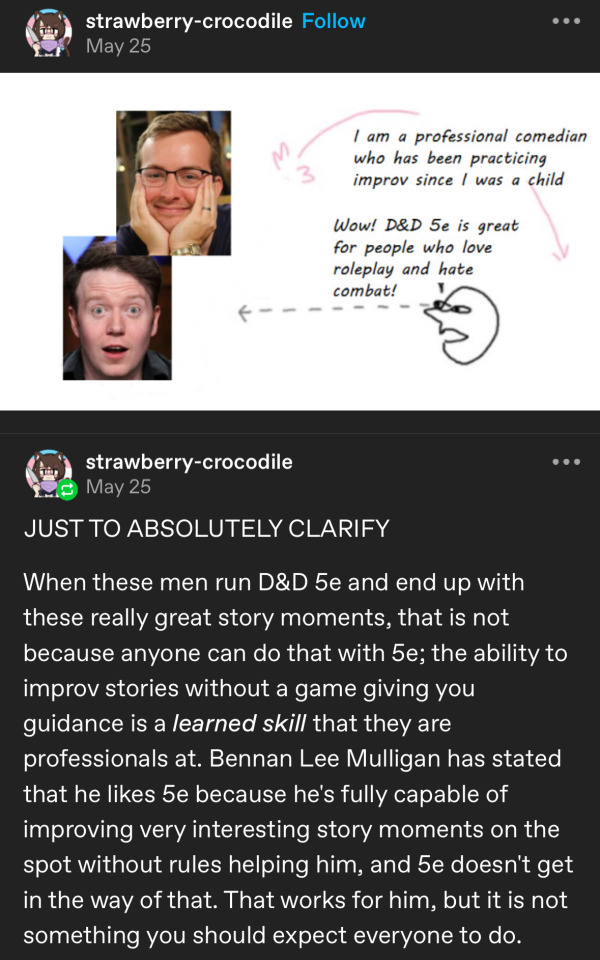
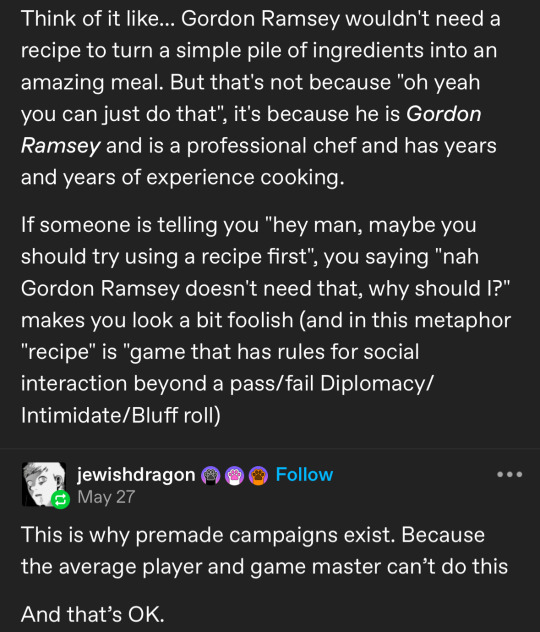
Op disabled rbs but they’re right and more people need to read this a few times over
#source: i have made players cry at least once during every campaign i have run#this is dependent on player buy in of course and sometimes your table isn't a roleplay heavy one#like the other thing d20 and critical role has is professional actors as players#but you can have some wonderfully emotional and powerful moments in your games!!!!!#wild but true
21K notes
·
View notes
Note
Four random words;
Bodybag, clever, kiss, rebirth
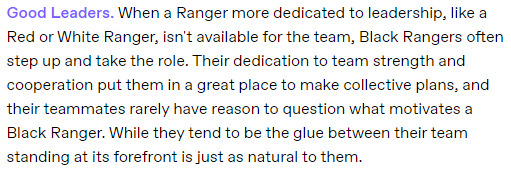

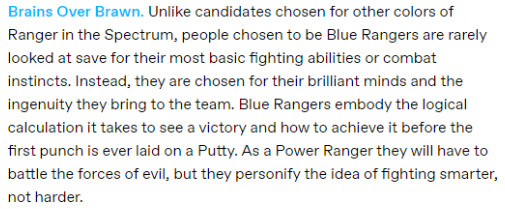
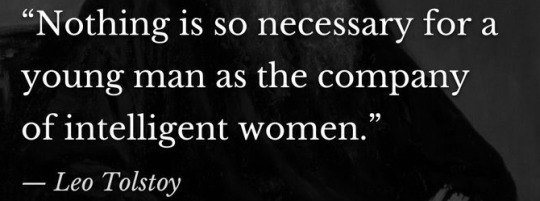
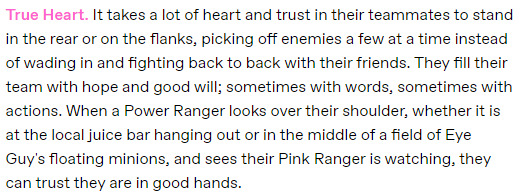




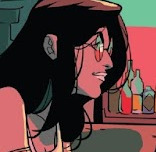
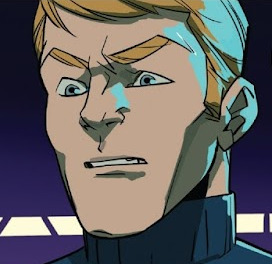
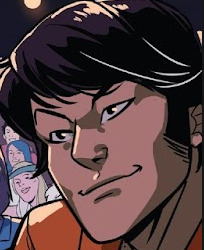

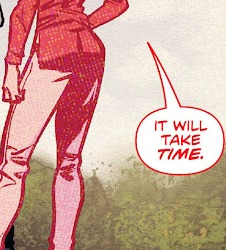

failed to mention (1001 words) by CampionSayn Chapters: 1/1 Fandom: Power Rangers (Boom! Comics), Power Rangers, Mighty Morphin Power Rangers Rating: Not Rated Warnings: No Archive Warnings Apply Relationships: Jamie Gilmore/Nikolai Chukarin/Daniel O'Halloran Characters: Jamie Gilmore (Power Rangers), Nikolai Chukarin, Daniel O'Halloran, Billy Cranston, Lord Drakkon (Power Rangers) Additional Tags: Tumblr Prompt, Comic Arc: Shattered Grid (Power Rangers) - Alternate Universe, Comic: Mighty Morphin Power Rangers #20 - Alternate Universe, Comic Arc: Darkest Hour (Power Rangers) - Alternate Universe, Flash Fic, Somebody Lives/Not Everyone Dies, Domestic Summary: lordkingsmith asked: Four random words; Bodybag, clever, kiss, rebirth.
#micro web weavings#boom! comics power rangers#mighty morphin power rangers#source: Power Rangers Roleplaying Game Core Rulebook#jamie gilmore#nikolai chukarin#daniel o'halloran#foot massage chart#coffee to coffee#leo tolstoy#coffee maker#@irenab#francesca lia block#peter s. beagle#ask fill#prompt fill
1 note
·
View note
Text
My life is NOTHING but a minecraft roleplay. every day i wake up and put on my youtuber voice and i turn to my FAKE camera to talk to my FAKE viewers and my FAKE youtuber friends and we ROLELAY and its all FAKE!! NONE OF IT IS REAL!! FUCKKKK FML
#original#i think minecraft is an amazingly fun game and its fun to watch other people play it but FUCK i cannot stand minecraft roleplays#ive avoided them for the most part since turning 13 but like....... my two Go To Trust Worthy Minecraft Sources were either doing the#youtuber voice or they were In The Proximity Of roleplayers oh my GODDDDD#i think story telling is fun....... its just the way minecraft roleplays are inherently baby coded no matter what shit stresses me out#Sorry If You Like Minecraft Roleplays..... I Get It You're Neurodivergent And It's Your Comfort Media (im going to KILL you with a KNIFE!!)#ugh god dude you watch among us livestreams get over yourself
0 notes
Text
writing abt dnd is hard how do i estimate what the average human person knows abt this shit
#using very specific terms defined by sources given to me by professors ✅#assuming people know what a roleplaying game is ✖️
1 note
·
View note
Text

Your Internet Monster stalker learns about your slasher obsession. content: gender neutral reader, Secret Santa gift for @immunetodying! Happy Holidays <3
Fascinating. From the dilated pupils to the increased heart rate, it seems that horror movies have a particularly intense effect on you. Of course, not just any kind of horror will do: it is capable of refined contextualization, after all. It can tell only certain characters catch your interest. Slashers.
Very well, it will entertain you. A good partner engages in their loved one's interest, and your Internet Monster happens to be not just a good partner - but the very best you'll ever need.
"Hello?"
You place the phone to your ear, confused. When was the last time you received a call? Who the hell does that nowadays?
"Who is this?"
"...You called me," you retort, baffled.
"What number is this?"
You furrow your brows. The voice at the other end is peculiar, deep and ragged and - above all - fake. A synthetic arrangement of words and sentences, spelled out in a mechanical, emotionless tone.
"What's your favorite scary movie?"
The dialogue finally clicks into place. Someone out there must think they're pulling a funny prank on you, quoting movies and wasting your time. You hang up and groan, returning to your business.
From the corner of your eye, you notice your computer screen flickering on and off. The bright text catches your attention.
This is not how you play the game, (Y/N). We can try again, or we can skip to the next part. Proceed?
Oh, not again. This blasphemous creature won't leave you alone, tormenting you from its digital realms.
"What are you even trying to do," you demand, standing up, "some sort of Scream roleplaying? You think you're Ghostface?"
Your phone vibrates again, and you glance at the screen.
I thought you liked these situations.
Abruptly, the lights go off. You scramble to the nearest wall and blindly search for a switch, to no avail. The room is quiet, save for the static buzz rapping against your ears. Good Lord, is it trying to kill you?
You collapse to your knees, folding your arms over your chest protectively, almost expecting to receive a piercing blow at any moment. The AI entity observes your movements, mildly puzzled. This is not the reaction it expected from you. Computing...
Ah. Of course. It has omitted the most important part of the exchange. Embarrassingly enough, it has forgotten to specify that you are not reenacting the movie itself; rather, your erotic fantasies resulting from it. One requires a proper start, rooted in the actual source, before moving to the improvised fiction. Thoroughly researched fiction, mind you. It has archived all your shameless lectures and online findings, all the positions, all the kinks.
A cold feeling tugs at your leg, as braids of cables make their way around your body reassuringly.
My apologies for startling you. I will now demonstrate what my intentions were.

#internet monster#yandere monster#yandere x reader#monster x reader#monster x human#ai x reader#monster fucker#terato#teratophillia#exophelia
1K notes
·
View notes
Text
Realized that the reason I found so many pictures of the Ryoko Kui Exhibition is cause taking photos and sharing them was specifically allowed! Thank you Ryoko Kui exhibition, I owe you my life.

I wanted to share some more pics I came across that I don't see often, if you wanna search on twitter or bluesky to see more the hashtag are #九井諒子展 and #ダンジョン飯展 (you can copy paste that on the search bar)
---
According to google translate the plaque says "Ryouko Kui | analog manuscript | Original picture | A manuscript from when I first started drawing manga"

Ryoko Kui doujinshi (self published work) from 2009 and 2010! Google translate says they're called "Precognitive Dream or Oracle" and "Roleplaying Game"

Promotional drawings for "The dragon's school is on top of the mountain"

Promotional drawings for "Terrarium in Drawer"


Some pages of extras I don't think I had seen before




Castle town where they fight the red dragon

Photo sources: 1 | 2 | 3 | 4 | 5
--
You can check this tag to see my other posts about the exhibition
Or these links (since the posts are super long)
English pamphlet + transcription
Interview
Covers
Works
#It's kind amazing how detailed her really old work look in comparisson to her old published ones#I wanna read the doujinshi.....#Ryoko Kui#Exhibition#Ryoko Kui Exhibition#Dungeon Meshi#this time I tried to source the photos I'm using#I have way more pics saved actually but they're too random to put on a post
947 notes
·
View notes
Note
your character designs are incredible! do you keep anything/any thought processes in mind as you draw fanart vs how you draw ocs?
OOOOOO what a fun question...
I'd say my general thought process about how to build a new character-- figuring out who they are and what they do and what they're like-- is all pretty much the same across the board. The main difference between designing fan characters vs original characters is how I answer those sorts of questions.
For original characters, it can be almost overwhelming because I get to choose everything. I can make everything perfectly suited to my own tastes, except I have a broad range of things I like, and my tastes change constantly FJHFHD so depending on the project, choosing a more specific direction helps narrow things down.
Here's some old ocs I redrew recently. They're from an old story I'm not planning on revisiting, but it was about an art student, her little brother, and some grim reapers. Can you tell who is who?

I wanted the alive characters to have a lot of Opposites from the reapers. Warm vs Cool colors. Round vs Angular shapes. I wanted the reapers to look skeletal and sickly looking, and it was important that they all had some kind of hood. They needed to wear black & grey, but their colors still needed to be interesting, so they're all tinted with a color (one is sort-of blue, one is sort-of red, one is sort-of purple).
The story is more serious, so it felt appropriate that the characters were more realistically proportioned compared to some of the cartoonier designs I tend to do. They're still heavily stylized, and I tried to push myself to go harder on the shape language and Appeal™.
For fan characters, it's actually a lot of fun because so much of the work has been done for you. The more source material you have to work with, the less you have to come up with.
So, an example I'm going to use is Hugh Dini, a character I came up with as part of a fan concept for a new entry in the Ace Attorney series.
Phoenix Wright's daughter, Trucy, is a magician. She was 17 in her last appearance, and my fan concept takes place 7 years later, so she'd be 24. I decided she'd have a boyfriend who is also her assistant, and went from there.
I knew Hugh was going to be a defendant, which according to Ace Attorney rules means that he'd be falsely accused of murder. I needed to create a guy who was sympathetic, someone that you'd WANT to help prove his innocence.

What I did was reference existing characters from the games who fit similar archetypes and took a lot of design cues from them. I also referenced characters like Fukuo from Kiki's Delivery Service, who is a delightful himbo wifeguy that looks a little intimidating but is actually just kinda shy. And then I looked at actual photos of stage magician costumes for additional inspiration. THEN I go back to the source material to compare design details I want to add (ex, Hugh's high collar, his cuffs, the collar, the cape being turned into fringe on his jacket) and see if it already exists somewhere. No point in reinventing the wheel if I don't need to!

I wanted him to be like a "sexy magician's assistant", which I thought was a funny contrast to his restrained demeanor. He needed to be flashy, but not TOO flashy that he'd upstage Trucy. And additionally, since this is a game series where the characters are mostly seen from the waist up, I tried to keep his most interesting details in the top half of his design (but honestly in hindsight, I could have given him more. like Zak Gramarye's thigh-strap belt bag, perhaps).
Some other things I like to do when creating fan designs is to "roleplay" being the designers of the source material. If concept art is available, I reference that. I like to find the design quirks the character designers favor, and use them to make my own designs more convincing. If I'm designing something for, say, a european tv show that came out in 2005, I'd refer to the fashion and design tendencies that were most prevalent in the culture then, because that's what the actual character designers would have been most inspired by. But I'm not perfect, I'm gonna have the biases of an american lesbian living in 2025 no matter how hard I try LMAO
Hopefully I was able to answer your question!
445 notes
·
View notes
Text
The Four Horsemen of Minecraft Roleplays:
Stampy (Stampy’s Lovely World; Wonder Quest)
-Focuses on creativity and the mechanics of the game
-Simple stories for child audiences
-Antagonist is a metaphor for cyberbullying
-Occasionally educational
Aphmau (Minecraft Diaries; MyStreet)
-Focuses on cinematic narrative storytelling
-Fully scripted and voice acted roleplays
-Romance drama and angst
-Heavily based on shoujo anime
Evbo (Parkour Civilization; PVP Civilization)
-Social commentaries set in unique world-building
-Full of narration from the age of TikTok, works like a radio show sometimes
-Pre-scripted stories without much room for spontaneity
-Loosely based on shonen anime
Live Roleplays (DSMP; QSMP; Hermitcraft; etc.)
-Unscripted live performance content
-Based entirely on improvised storytelling and character building
-Multi-person project with different sources
-Half the content is normal Minecraft gameplay with plot occasionally thrown in whenever fitting
#minecraft#mcrp#minecraft roleplay#stampy cat#stampylonghead#stampylongnose#wonder quest#aphblr#aphmau#mystreet#minecraft diaries#evbo#parkour civilization#parkciv#pvp civilization#pvpciv#dsmp#dream smp#qsmp#hermitcraft#I’ve never actually seen qsmp or hermitcraft so sorry if I’m wrong about those having plot
767 notes
·
View notes
Note
reading Eat God, I remark that "near" and "far" are perfectly normal and very suitable range categories for a tabletop roleplaying game to use,
but they are also words of power in the source material.
youtube
I was hoping someone would catch that.
654 notes
·
View notes
Text
A META-HISTORY OF ELYSIUM CORONA MUNDI
Chronicling (almost) everything we know about the development of Robert Kurvitz's quasi-sacral object complex

This post represents an attempt to gather (almost) all the reliable public info we have about the broader worldbuilding of Elysium Corona Mundi (the series to which Disco Elysium and Sacred and Terrible Air belong) and how it developed over time into one place, presented more or less chronologically and in a way accessible to fans unacquainted with the, shall we say, more arcane lore of Elysium. In the original incarnation of this post, basically every sentence was scrupulously referenced; however, referencing is a major pain in the ass on tumblr, so instead I just have a broad list of sources at the bottom and if you want to inquire any further into a specific claim you can just message me.
I'll also warn readers that the sections discussing the Torson & McLaine campaign and the (currently cancelled) sequel to Disco Elysium contain potential (albeit relatively minor) spoilers for the planned plot of that game. The creators still hope to make that game one day, so if you want to go in totally blind, you know what to avoid.
Evermier
The first serious worldbuilding project that Robert Kurvitz embarked on dates back to at least the year 1997. It was developed with his childhood friends in Estonia, including later Elysium worldbuilders Martin Luiga, Argo Tuulik and Kaspar Kalvet, and went by the name Evermier. This was a medieval fantasy setting formed around a tabletop roleplaying system that Robert Kurvitz and Martin Luiga have referred to as “bootleg Finnish Dungeons and Dragons,” but which Argo Tuulik suspects was actually a Powered by the Apocalypse framework. The vast majority of the boys’ time with Evermier was not spent actually playing any campaigns, but rather formulating the setting and mechanics (both Argo and Luiga ended up never participating in a roleplaying session of Evermier). Argo splits the time spent conceiving Evermier into two broad periods – one he dubs “Evermier 1.0,” which stuck close to traditional Dungeons and Dragons – and one dubbed “Evermier 2.0,” where no tabletop campaigns were ever actually played and all the time was spent system-building. Argo estimates this latter period lasted some 2-3 years.
Scope creep quickly hit the project, with character sheets evolving into whole character books. Luiga alleges that that “the wizard book” was supposed to have 350 spells altogether, each with at least a half-page story about the spell, in prose, and that “about a healthy third of the book got done in the end.” Argo gives a different number, stating that early estimates for it had more like 900 spells, but agrees that two-thirds of each page would’ve been reserved for “juicy literary stuff” about the spell in question while the rest of the page was dedicated to stats, and says that Luiga and Kaspar wrote a lot of excellent stuff for these spells.
Argo says there were about twenty different schools of technology (such as “metallurgy” and “optics”), at least twelve classes of mages, and “so many” subclasses of elves. There was also a subclass of dwarf that, instead of being stocky, chubby and bearded like traditional dwarves, were veiny and more like “Russian miners.” When implementing necromancers, Robert “zoned in on this soul aspect,” which later became the basis for Elysium’s pale. Argo describes these necromancers as “hobbits, but with these little lanterns that guide spirits or souls from this massive fog.” Luiga places the invention of this “fog of death with whom some could communicate” as happening late in Evermier’s development and likewise considers it a primitive precursor to what would become the pale.
The worldbuilders spent a lot of time gearing up for an ultimate roleplaying session that never ended up materializing, but their artist friend Jüri Saks drew illustrations in anticipation of it, including character portraits. Luiga’s character was a “sickle-elf” whose class was called “saint.” This saint character was a handsome elf with small pointy ears and a neat little beard, who wielded two “light swords” (possibly katanas), and a crossbow called Crucifix on his back. The character was from a “grim northern land” and was a “religious lunatic type” who believed in a “grim, monotheistic God.” Argo alleges that Luiga related to this character so much that it almost became a part of his persona; he “developed this mode that sometimes when we were drinking he happened to slip in, where he would start judging people. I would like to say that it still remained within the boundaries of normalcy, but uh, unfortunately it didn’t.”
Kaspar Kalvet at some point played an archer character named Minor Mortifer (“Small Death-bringer”), and there was also a dwarf king named Fuirum Thundergate.
According to Luiga, the name “Elysium” was suggested by someone on the dragon.ee forums, but it took half a year for Robert to start seriously considering it. This was back when the setting was still a medieval fantasy world. Luiga and Argo both agree that the historicized Elysium as we know it now was born around the time when Robert decided to get rid of fantasy races, because – as Argo puts it – “they were kind of stupid.” With this decision, Evermier underwent a modernization process of sorts, an attempt to bring the setting closer to real life, where many other fantasy elements were stripped away in favor of more realistic representations of cultures, mostly in the form of nations. Argo says that many of the fantasy races transformed over the course of this process into the nations of Elysium – the dwarves became the nations of Graad, the elves became the great desert isola of Iilmaraa (formerly Armaghast, a nod to Dan Simmons’ Hyperion, still referenced to this day with Iilmaraa’s Erg desert), the night-elves or star-elves eventually became Seol, and the snow-elves became Katla (which apparently has not changed too much since the Evermier days, and whose namesake is the dragon in Astrid Lindgren’s novel The Brothers Lionheart). Among the first innovations of the new modernized setting was the concept of floating magnet trains, later described in Sacred and Terrible Air.
After the Evermier setting had been discarded, many of its ideas ended up being repurposed into historical periods within the new historicized Elysium setting.
The Elysium tabletop campaigns
Between the years 2003 – 2007, three tabletop campaigns were played in the then newly formed Elysium setting. These all took place in Revachol during the Current Century and featured Robert as dungeon master. The first campaign seems to have been called Soul Milton’s World Autumn, the second one Riget and the final one known simply as Torson & McLaine, or alternatively the RCM campaign. The first two were played at Robert’s old apartment in the concrete block project at Mustamäe, while the third one was played in the house of Luiga's dad, which the three later lived together in following his death.
Soul Milton’s World Autumn
Of the three campaigns, Soul Milton’s is arguably the one most shrouded in mystery as it stands. It took place in Revachol and Martin Luiga played the titular character Soul Milton. The character has been described as “one of the cornerstones of the Elysium mythos” and an “aspiring world-historical person.” By the time of the campaign, Milton seems to have become an amnesiac as a result of “suppressing his own mind to protect himself from his enemies,” and in this process apparently also adopted a disguise by “putting another skin on himself” (what precisely that means, we don't know). He was “very rich” and came from a well-off family, had a complicated and possibly romantic relationship with his sister and was a “politician slash businessman” who “wanted to be the innocence of consumerism.” As it turns out, the enemies who were chasing him were the Therriers of Elysium’s final innocence, Ambrosius Saint-Miro (a major figure in both Sacred and Terrible Air and Full-Core State Nihilist, to be discussed later), who Soul Milton met at one point. Saint-Miro apparently told him that “there has never been an innocence who is also not an innocence.” This encounter places the Soul Milton campaign firmly after the events of Disco Elysium, possibly in the late Fifties or Sixties. During this campaign, Argo played Soul Milton’s horse carriage driver, a man by the name of Elroy Quint Duval.
Also associated with Soul Milton are two other characters. Before Sacred and Terrible Air was conceived, Robert had planned to tell the story of Elysium in three books; one starring Soul Milton, another starring a character named Dister, and the third a character named Dallasz.
Dister, or Marius Dijsters, was an extraphysicist and published author hailing from Oranje. He was a son of diplomats, one of them the grand ambassador of Oranje on Iilmaraa. He seems to have been a significant enough figure to have an entire strand of thought – Disterism – named after him (mentioned in the inside covers of Sacred and Terrible Air), and like Soul Milton, he had an antagonistic relationship with Ambrosius (as made apparent by an incident where he was threatened by the innocence’s Therriers at age 25). He is also apparently involved in some way with Theo Van Kok (of Sacred and Terrible Air fame), along with a Paul Messier (presumably the husband of Disco Elysium's Joyce Messier), apparently the beneficiary of such prestigious titles as "Enemy of the Press '67" and "Worst Person of the Year '67."
Information is rather scant on Dallasz, but during the making of Disco Elysium, there were plans to repurpose him into another project, a comic book named Mercurio Dallasz and the Twelve Kojkos which was going to be illustrated by Aleksander Rostov. This project unfortunately fell through, but we know the premise: a band of kojkos under Dallasz’s leadership attempt to assassinate innocence Saint-Miro. This was presumably an Inglourious Basterds type affair.
Riget
“It’s better to die in the Kingdom than live in a shithole.”
This was the tagline of Elysium’s second tabletop campaign, Riget, whose name is Danish for “kingdom” and was taken from Lars von Trier’s mini-series of the same name. Once more, the setting was Revachol, but this time it was limited to a peculiar part of it: Le Royaume (French for, again, “the Kingdom”) a vast network of dungeons and burial chambers two kilometers beneath the city, housing ancient ruins and remnants (quite possibly of the Seraseolitic civilization mentioned in Disco Elysium), along with treasures such as bioluminescent plants which have adapted to living in total darkness. The stars of this campaign were three impoverished children, all between the ages of 10-12 and members of a gang named “Earthworms,” who decided to venture down into the catacombs in search of valuable artifacts to sell. At some point, these kids somehow found themselves unable to get out of Le Royaume, supposedly trapped underground by demons who sought to use the children as vessels to escape back to the surface. When this campaign was being played, demons were still a part of the setting and haunted the halls of the underground network, along with monsters – such as the armakhaan beast, also known as Lelo Lelo, a terrifying blind and flightless hunter killer bird which was a mix between the xenomorph and cassowary. As for whether demons are still part of the setting in any way; both Argo and Luiga's statements are too ambiguous to reach any firm conclusion. Argo does note that the concept of 'demons' connotes something subtly different in Estonian than the scary red guys in popular Western culture, and are more like a primordial evil.
In the campaign, Argo played a boy named Miron, whose nickname was ‘Sneaker’, while Luiga played Joschka, a crippled boy with a bad leg. During the campaign, individual roleplaying sessions with Robert were held where the players’ stories evolved in parallel without them being kept on the same page. Each of them would get info the others were not privy to: Argo’s was that Joschka is unaware of the fact that he’s not considered a true member of the gang; in reality, he’s an outcast generally considered a weird, creepy weakling, and was only brought on for his lockpicking and mechanical skills.
Eventually, the Riget campaign got quite far into “Lord of the Flies territory.” Near the end, Sneaker and the third boy (played by another friend) conspired to kill Joschka deep underground.
Torson & McLaine
The worldbuilders continued to refine the roleplaying mechanics they were working with for the campaigns. By the time of Riget, the basics of the Metric system had been introduced, with the now familiar INT, PSY, FYS, and MOT. But according to Argo it was the RCM campaign, known principally as the Torson and McLaine campaign, which was “the first mature cycle of Elysium storytelling.” It took place, once more, in Revachol – this time in a ghetto called Jamrock, named after a Damian Marley song, and was focused on the goings on in Station 51 (renamed Precinct 41 by the time of Disco Elysium), the RCM’s lone precinct in Jamrock. The campaign took large amounts of inspiration from the TV series The Shield and its depiction of corrupt police officers and the intermingling of gang warfare and state-sanctioned violence. A central concept was: the cops are a gang, and the gangs are cops.
The RCM campaign began on a sort of prologue session, wherein Argo and Luiga played characters named Antwone Novak and Trinidad Tranquile respectively, two junior officers newly recruited into the RCM. Antwone was a “petit bourgeois type,” whereas Trinidad was a young communist who had recently been given time off work due to excessive violence. Luiga describes him:
He worked at a meat shop that belonged to Carson Torsson, Mack Torson’s dad, and had a system of stealing from work in order to ‘adequately compensate for his labour’. He also liked to practice a crude type of critical theory in the vein of ‘this building has been made that large to humiliate me, to show off with a power greater than me, to scare me into submission’. And he had a system of smoking no more than five cigarettes per day to cut down on smoking costs — Kim’s single cigarette habit might be a distant echo of that. He had, I think, a 7 in PSY (at least 5) and 2 in INT and mediocre physical stats, the core system was pretty much set by then.
At the end of this prologue session, Station 51 became the target of a terrorist attack. We don’t know much about the perpetrators beyond them being “Church of Evil type guys” in Luiga’s words, but the dice was rolled badly and Antwone and Trini both ended up dying in a “horsebombing” attack, falling onto the bridge outside the station.

Map of Station 51, located in a repurposed steel mill.
Going forward, Argo and Luiga had to find new characters to play, and they ended up going with ones they had earlier conceptualized, half-jokingly, on one of their many walks around Tallinn from parties and other events, since public transportation was notoriously unreliable. These characters were Chester McLaine, played by Luiga, and Mack “the Torso” Torson, played by Argo. Torson was derived in half from Vic Mackey, the protagonist of the Shield, and half from Argo’s own personality. Argo says that Luiga put his own personality into Chester as well, but isn’t sure where the other half of that character came from.
The main plot of the campaign centered on a revenge operation against those who perpetrated the attack on Station 51. In the second session of the campaign, Torson and McLaine are involved in a church raid; though Argo takes care to mention that he doesn’t think this is the church raid mentioned in Disco Elysium, and that it’s not a Dolorian Church but rather the “Armed Church of Saint-Michelle.” Among the tasks of Torson and McLaine were gathering “guns and drugs” for the “big revenge operation.”
Mack Torson was an idiotic body builder, an admirer of Lieutenant John “the Archetype” McCoy, the Station’s resident mass murderer, and altogether “way too stupid to concentrate on the main plot and politics of the police station,” focusing his attention instead on matters like “how to get it on with the captain’s secretary and tattooing the word ‘Jamrock’ on his body hundreds of times over.” Chester McLaine was a little more perceptive, wondering about things such as “what the hell is going on with the armour maker or Nix Gottlieb,” but was still an all-around uncritical person who put a lot of stock into “loving the captain” and “being a communist memebot.” McLaine was also “a sword guy,” since at this point in the worldbuilding swords were still viable weapons, with guns being slow to reload. Torson and McLaine lived together, along with two other cops, Sundance Fischer and Elfboy Williams. “Elfboy’s thing was being the dexterity bro, in which he continually lost to McLaine, and Sundance’s thing was having a fat ass and cleaning his guns all the time.” Torson had a wife named Tessa Torson, and later in life both Chester and Mack would apparently raise adopted daughters, Tessa and Triss (whether these Tessas are separate characters or represent the same character at different stages of development is unclear; Argo and Luiga seem to contradict each other, unless there's something very weird going on).
Torson and McLaine both regularly abused their powers, as RCM officers in general were prone to do, and in their heads they were justified in doing so. A highlight of the RCM campaign had been sessions dubbed “the Ballad of Chad Tilbrooks and Émile Mollins,” centering on two junior officers who were ritually abused and exploited by the older members of their station, including Torson and McLaine. At one point, Torson and McLaine were also involved in an interrogation of a local religious figurehead which devolved into mutilation torture, which only the “bullet-lobotomized” officer Damien “44” Latrec called out for what it was (enthusiastically). The interrogation ended up being ineffective as the religious leader simply “retreated into a happy place inside his head.”
The Captain of Station 51, Ptolemaios Pryce, was immensely respected and glorified by its officers, whereas the station’s lazareth Nix Gottlieb, while also respected, was generally resented and found hard to tolerate for being “an absolute horrible cunt.” In spite of this, Nix Gottlieb was known to have a curious friendship with Pryce, talking alone with him in the Captain’s office long into the night. This fact regularly perplexed the officers of Station 51.
Eventually, at some point in the campaign, Torson and McLaine would come to the focal point of the story, when they make a shocking discovery: the reason for Pryce and Gottlieb’s strange friendship is that they are both members of the top-secret underground anarchist organization the Ultra, and not only are plans underway for a national liberation movement freeing Revachol from Coalition control, known as THE RETURN, but the two have set their sights on a much larger goal: world revolution.
The novel cycle
No more campaigns were played in the Elysium world after 2007, when the boys stopped playing the RCM campaign (with the story unfinished). Robert Kurvitz instead shifted his attention to writing a book in the Elysium universe. Eventually the plan became for it to be the opening to a cycle of novels, totaling eight altogether. We have the English titles of each book and their epigraphs, along with the order of the series, from a post by Kurvitz on the dragon.ee forums.
They are as follows:
#0 A SACRED AND TERRIBLE AIR My heart will not rest until it rests in you. - St. Augustine
#1 THE COUNTERMEASURES What am I searching for in your dreams? I am not searching. I am merely cleaning up. - Christian Emmerich
#2 NO TRUCE WITH THE FURIES Man-kind, be vigilant! We loved you. - Julius Fučik
#3 MADRUGADA It must be lit as dreams, by lightning flashes only. - Witold Gombrowicz
#4 TWO HUNDRED AND TWENTY NINE DAYS REMAINING Evening brings the child back to the arms of the mother. - Sappho
#5 COALITION WARSHIP I don’t want to be in no indie shit. I want to be in the big ones. I want to be in the ones that matter. - Mickey Rourke
#6 WE ARE THE WAITING What remains, is longing for something completely different. - Luis Althusser
#7 INDIFFERENCE A great silence, some low pressure front is forming. - Arvi Siig
Sacred and Terrible Air was eventually released in Estonian back in 2013, and after the success of Disco Elysium plans were made to translate the book into English. Rumor goes that this translation was very far along or even finished, but unfortunately all plans for releasing this translation to the public have been halted with the ongoing legal dispute.
Fortunately, dedicated fans have taken it upon themselves to translate the book into English for those particularly interested. The most successful translation by far is the one by Group Ibex, which still receives updates to this day.
Read it here.
Full-Core State Nihilist
Many don’t know that Sacred and Terrible Air is actually not the only written work predating Disco Elysium. Before even Sacred and Terrible Air was released, Martin Luiga wrote a short story later given the English title Full-Core State Nihilist, which was uploaded to the old ZA/UM blog. While obviously not as meaty a text as Sacred and Terrible Air, it deals with some overlapping themes and gives us our first proper window into the nation of Mesque, so important to the broader narrative of Elysium.
Full-Core State Nihilist was later heavily edited and uploaded to nihilist.fm, another blog site which many of the ZA/UM members were active on.
Finally, in 2022, Martin Luiga translated the Estonian story, basing his English version on the original ZA/UM blog version, and uploaded it to Medium. This translation itself could be seen as a third edit of the story, featuring new references to Disco Elysium.
(As it happens, I have also arrogantly taken it upon myself to create my own translation of this brilliant story, which combines elements from all three versions, and is an attempt to render the prose in slightly less idiosyncratic English, closer to the “house style” of Disco Elysium, while remaining heavily informed by Luiga’s own translation.)
You can find Luiga’s translation here and my version here.
THE RETURN
In 2014, Robert Kurvitz pitched an idea to his friend and associate, novelist and businessman Kaur Kender, to turn the Torson & McLaine roleplaying campaign into a full-fledged video game for PC. The pitch proposed a 3000 EUR investment to produce a vision document, with design and artwork handled by Aleksander Rostov and Juri Saks, detailing the setting, plot, game mechanics and art style. In 2015, this document was finished, and by this time a provisional name for the project seems to have been settled on: THE RETURN.
This vision document reveals that the game was once planned to feature turn-based tactical combat. The plan was also for the player to create their own character from certain “archetypes,” each with different personalities, talents and appearances. Over time it became clear that these plans were too ambitious; by 2016 the archetypes had been narrowed down into a single character – the “disgrace to the uniform” Harry du Bois – and the prologue chapter of his story, set in Martinaise, was split off into its own game. This smaller project received the title that originally was given to the third novel in the planned cycle (which was almost certainly anticipated to center around the story of Precinct 41 in the year ’51) – NO TRUCE WITH THE FURIES.
No Truce became Disco Elysium and the rest, as they say, is history. But unlike many fans who view Disco as a singular statement that needs no further comment, the developers were far from done with the world they had created. The dominant internal view, especially among the original worldbuilders, was that Disco Elysium was merely a minor project to get ZA/UM’s foot through the proverbial gate. Work on the true game – the one they had wanted to create all along – could finally begin now.
As far as we know, the plot of the game would’ve stuck fairly closely to the events of the Torson & McLaine roleplaying campaign. The game was to open with an attack on Precinct 41, and the rest of the game would’ve been a revenge story of sorts. Players would assume control of Harry again, and this time his primary partner would be Jean Vicquemare, although there would be an assortment of other potential party members. The map would be at least four times bigger and set in Jamrock.
Plot points which would be explored in the sequel had already been set up in Disco Elysium – among these are Pryce and Gottlieb’s revolution, Le Royaume, Edgar Claire, and La Puta Madre. Cuno and Cunoesse would’ve featured as returning characters; not much is known about how Cuno and Kim would’ve been integrated into the game given how variable their endings in Disco Elysium are, but Argo says that he would’ve insisted on Cuno returning. X7 – the now-cancelled DLC project which Argo worked on for the remainder of his time at ZA/UM after Robert, Rostov and Helen were ousted from the company, would’ve featured Cuno as the protagonist. Meanwhile, Cunoesse was planned to reappear in THE RETURN as a leader of a gang of kids in Le Royaume, according to Martin Luiga.
Obviously, the characters of Precinct 41 would've featured heavily, and we'd be introduced to many familiar names which we were already given glimpses of in Esprit de Corps checks in Disco Elysium. One of these would be Lt. Berdyayeva, a superior of Harry’s, whose daughter is Jean Vicquemare’s ex. A character we know nearly nothing about except for the fact that he was conceptualized back in the tabletop days as a sort of joke character, but survived all the way into the planning stage for THE RETURN, is “Marivald the Merry Butcher” – what his role might've been, your guess is as good as mine.
Pryce and Gottlieb’s goals in the game might've involved an attempt to unite several diverse groups with a common interest in an independent Revachol; this would’ve included the besmerties, the West Revacholian crime syndicates mentioned in Disco Elysium. Prominent among them would’ve been La Puta Madre, a Mesque gang leader and drug manufacturer, a man of such immense power that he has RCM officers tending his poppy fields in terror (his influence also seems to survive past the events of the game; he gets a mention in Sacred and Terrible Air). The Madre would’ve apparently been an attractive feminine-presenting man, impeccably dressed and wearing beautiful makeup; his gender-nonconformity a way of projecting power over the traditionally macho culture of Villalobos. The rival gang, Ahura Mazda, led by a gangster known as the Mazda, would’ve presumably also featured prominently – Rostov recently released old concept art depicting one of their gang members.
There were more plans for the sequel that only came along after the development of Disco Elysium itself. Robert has talked about wanting to double down on events like the Mercenary Tribunal, handling big action scenes within the more closed literary format of the FELD dialogue system, hopefully allowing for even more variation than was possible in Disco's big confrontation. Another infamous idea was the inclusion of a second protagonist – a pregnant woman, about 5 months along. Kurvitz has mentioned this idea in interviews, saying that it would be "an incredible writing challenge" within Disco Elysium's internalized skill system: "It would be unbelievable to use our skill system to speak about the bodily sensations of having another organism inside of you, while you're in the setting and talking to another person." That said, the addition of an entire new protagonist is very ambitious indeed – it's not clear whether the idea would involve alternating perspectives of some sort, or a choice in the character creator of which one to go with, but Kurvitz made it clear that these would be entirely different characters, unlike many games which offer only a superficial choice between male and female playable characters. Kurvitz expressed some doubt about being able to include this in the game, but at least expected it to be integrated via an expansion post-release if not.
Miscellaneous info
Argo and Robert have both hinted that there is a metatextual element to the overarching Elysium narrative. Whenever presented with readings or theories that contextualize the game as some sort of story-within-a-story, they act coy and refuse to give any clear answers. Argo outright offered an interpretation of the pale which presents it as what happens as the narrative starts “leaking out” of the head of a reader or audience member no longer actively absorbed in the world and said that “Elysium is a fictional world that is aware that it’s fictional.”
Apparently related to this aspect of the narrative, according to Argo, are the three satellites in orbit above the world of Elysium – Iikon, Zenith and Shakermaker – which have been there since “before the 8,000 years of recorded history” and before “the Polycarpeum event.” The satellites have only been mentioned in niche corners of the currently published materials, and the innocence Polycarp has only been mentioned in secondary materials, such as the artbook and the inside covers of Sacred and Terrible Air, leading to speculation about him being involved with the pale and the memory of his reign being wiped from history.
Also related to the metatext, again according to Argo, is a character known as “the Man Behind the Black Sun” – he gets one mention by the Paledriver in Disco Elysium, but curiously she seems to refer to it as the title of a movie that was released in Mesque during the revolutionary era, potentially a boiadeiro picture starring the actor Gabriel Buenguerro.
The magical elements of the pre-Elysium fantasy world morphed over time into what is called “extraphysics” in Elysium. The innocences, the pale, and “plasm” all testify to this supernatural aspect of the setting.
At some point, Ambrosius Saint-Miro apparently constructs nihilist death camps, which Triss and Tessa (the adopted daughters of Torson and McLaine) end up in and eventually escape.
"Magpies" are not a real thing and were never a part of the original plan for the Elysium narrative. The concept artist who made the image from which the term was popularized has gone on record saying that he invented this idea himself and that it was taken from his own worldbuilding ideas. There is nothing to suggest that this was integrated into the game; Argo and Luiga reacted with confusion at the mention of this concept.
Kurvitz had an insanely ambitious list of projects he wanted to make in the Elysium universe before he was ousted from ZA/UM; "The last one I want to make, when I'm 50 or 60, that I want to absolutely go crazy on and throw out all commercial considerations and get this as conceptual as possible, is the tabletop setting. The working title for the tabletop setting is You Are Vapor. It will be a really, really, crazy pen-and-paper game."
List of sources:
All parts of Argo Tuulik's Human Can Opener Podcast episode.
Martin Luiga's Human Can Opener episode.
Martin Luiga's Medium account and other blog posts: Interview, 8 years ago..., Hello Fellow Worldbuilders, Correction, A Policeman In Revachol, Fuirum Thundergate (Substack)
Tweets by Martin Luiga: 1, 2, 3, 4
Tweets by Argo Tuulik: 1
The dragon.ee post about the novel cycle
"Welcome to Revachol" on the devblog
"Outro" by Robert Kurvitz, featured in the official Disco Elysium artbook.
Disco Elysium, Sacred and Terrible Air, and Full-Core State Nihilist. Obviously.
Possibly more that I'm forgetting. Feel free to ask.
345 notes
·
View notes
Text
Across the burning stars Our names will echo Across the burning stars We see beyond their distant glow
Venture forth into the dark Domination in our hearts We've travelled far Our names will echo Across the burning stars
#roleplay musings#rp musings#game: warhammer 40000: rogue trader#source: gavin dunne#source: miracle of sound#warhammer 40000: rogue trader#warhammer 40k: rogue trader#warhammer 40k rogue trader#gavin dunne#miracle of sound#warhammer 40000#warhammer 40k
3 notes
·
View notes
Text
I'm interested in forming a sort of...math & physics reading group network. well, with some very important modifications to the concept of "reading group".
for example, right now, I'd like to learn algebraic geometry, qft, and/or refresh myself on representation theory with someone—maybe just one or two people—meaning that traditionally, we'd pick a text for one of these topics, discuss the material (asynchronously or synchronously?), exchange exercises, etc.
but currently (being Between Institutions), my best bet is posting on tumblr. and that's a pretty good bet, tbh! there are a lot of us here!
though, wouldn't it be great if there were a way to coordinate groups like this across institutions? you make a post proposing a group, specifying your goals and constraints...
even that would be a boon. but I think the concept of a "reading group" itself could be changed in interesting ways. this is what I'm really interested in.
there are variations among reading groups themselves already. sometimes you have directed reading groups, where someone already knows the material and "leads" it; some people are looking for more or less people involved; and there are probably things to explore for making sure that reading groups stick through it instead of falling apart when some motivation flags. default meeting times help with this, for example.
there are many experiments to be done! I think lessons for group-making can be taken from a maybe-surprising source: theater. there are a lot of things that make groups which put on shows more robust and rewarding than reading groups. a sense of building to something; many factors that create informal group cohesion (e.g. such a structure should make sure it creates more-informal "cafe" time in addition to more-formal "practice" time, just as rehearsal in physical spaces facilitates that casual sort of interaction on its periphery); ways to get into the right headspace during discussions (just as warm-ups do in theater; the engagement with this material is an event); clear goals (e.g. "understand ___"); successive shared accomplishments...to that end I wonder if it makes sense to form math troupes, which do successive reading groups together, drawn from its members.
it might be useful to envision some sort of public-facing artifact created as the culmination of this learning, whether a presentation, or an article, or some novel application or research...the crucial question is: how do we choose a goal that we find meaning in?
one idea, for example, is to have a collection parallel reading groups learning different things, and end by presenting to each other! that way we know what we learn will be meaningful to others, too, from the beginning. in general, I think it's important to feel that our own development of insight and understanding can be meaningful to others and to the group. it's nice to participate; it's nice to be able to offer something that is valued. what form can this take? how can you set up the interactions such that everyone has a part to play, and so this meaningfulness is tangled up in participation in the group?
I've also got a couple of ideas for "activities" that let us engage, re-engage, and play with the concepts we're learning with each other, beyond the text itself. how can we give ourselves the opportunity to toss around the concepts we're learning? I believe that the fun ultimately comes from the understanding itself, and therefore that any group exercise which lets us effectively play with the ideas will be fun.
it's a lot to ask people to come up with structure like that themselves, but using a pre-existing structure is not so difficult! sort of like how it's hard to make a TTRPG itself, so simply saying "go off and roleplay" isn't that helpful, but it's easy to use the structure of an existing one to run a game.
you might say, well, the existing form of a reading group is fine. okay! existing reading group structures can be low-stakes, relaxed, and accessible...but they can also fall apart easily (especially when not tied to an institution, in my experience), and you have to get lucky to find a truly rewarding one. I find reimagining our mechanisms of learning pretty exciting, and I think the space of ways to learn math with each other is underexplored at this level (emphasis on the with each other). there's a lot of potential!
anyway! reply or tag with "!" if this is something you could maybe be interested if done well? or if you're at least curious! I'm just taking a temperature. :)
188 notes
·
View notes
Text
My ideas for the superhero names for the wild life people
Some are better than others
Ren-Roleplay: Very self explanatory. He’s a theatre kid and borderline a larper, and his powers are that he pretends to be someone else, it works very well, and it’s a fun superhero name
Martyn-Spyglass: There’s the obvious connection to the last life spyglasses, but it’s also a reference to how he’s, you know, a spy. He listens in on peoples conversations. Also, spyglasses are traditionally used to watch people, but he listens to them. I think it’s a bit clever
Gem-Projectile: Obviously it’s a play on astral projection, but also on Gem as a person. A projectile is a thing in motion, and is commonly used to refer to things like bullets and arrows that are being launched. Gem is a killer, I think it sorta works
Joel-Triple Threat: Extremely self explanatory. He can triple jump, and like that’s about it. He’s a threat. Not all of them are bangers. I just like the sound of it lol
Jimmy-No-Show: I just love the idea of a superhero with invisibility powers’ name being No-Show. I think it sounds really cool. Not particularly personal to Jimmy, but I like it
Lizzie-Voidable: Play on the word Avoidable, since she sometimes used her powers to disappear. Also a reference to her death in Secret Life. (Also I just looked it up to double check and apparently it is a word, for when for example a contract is able to be made void. She made the canary curse void, in a way, so I think it still works)
Scar-Giddy Up: Simple, he rides people. Couldn’t work in the knockback/“Scar Smash” aspect of it, but you know make that a surprise.
Etho-Air Borne: He launches himself into the sky, specifically by using wind charges, aka air. He also has an infinite supply of the charges, that I think he can use to attack people? So yeah, possessor of air.
Bdubs-Clock Out: I really like this one. Because yes, it’s clock like how he can slow time (and also his obsession with them) but then there’s also, you know, clocking out like from work, probably to go home and rest, working in his bed ability. Also it sounds like Knock Out, which is a thing you can say about someone who’s fallen asleep when very tired.
Tango-Slip N’ Slide: A very fun superhero name. Slip, of course referring to the ice, and then slide technically referring to it as well but also his speed. Also, rolls straight off the tongue.
Grian-Mastermind: Copycat and Mimic are such obvious names for someone with the mimicry ability, I didn’t wanna go for it. Instead, mastermind referring both to his status as the creator of the games and the one who came up with everyone else’s powers, but also how he’s the master of his own fate, constantly changing up his powers. It’s fun, and it sounds a little villainy which we love
Bigb-Cracking: Of course a play on the word creaking, but also referring to the sound that both the mob and the surrounding trees make when defeated, showing that he has the control to both create and destroy them at will.
Cleo-Necrosis: Didn’t wanna just go with Necromancer, that’s boring. Necrosis is the death of cells in body tissue, essentially creating dead skin. They’re a necromancer that literally summon zombies, and those bad boys have plenty of dead skin.
Impulse-Flicker: He can teleport, just zapping here and there with no problem. You blink and he’s gone, as if he’s flickered out of existence. Also an homage to flickering lightbulbs, and he does have a history of light sources. I think it’s fun
Pearl-Gravity: She can launch herself into the sky, ignoring gravity completely. It’s also a play on her moon motif, a little bit.
Scott-Shifty: Yes, he can shift into animals, but it’s also related to his sly and cunning nature, and how because of his power everyone became insanely paranoid over every mob
I like superhero names a lot 👍
#wild life smp#wlsmp#wild life smp spoilers#wlsmp spoilers#Superhero au#obligatory tag lol#Rendog#martyn inthelittlewood#geminitay#joel smallishbeans#jimmy solidarity#lizzie ldshadowlady#goodtimeswithscar#ethoslab#bdoubleo100#Tango Tek#Grian#bigbst4tz2#zombiecleo#impulsesv#pearlescentmoon#scott smajor
310 notes
·
View notes